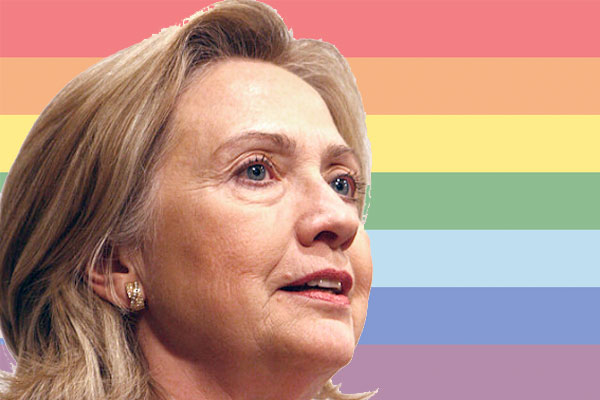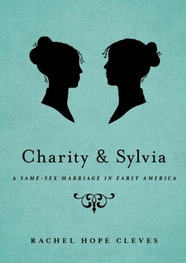Hillary Comes out of the Closet

Hillary Clinton’s testy June 12, 2014, interview with Terry Gross on National Public Radio’s “Fresh Air” was featured heavily in the news this past week, with the majority of the attention focused on the two women’s tussle over the likely Democratic presidential candidate’s shift in attitude toward same-sex marriage. Of the four hundred plus comments that the transcript of the interview generated on the NPR website, the vast majority concerned this exchange. During her political career as Senator then Secretary of State, Clinton opposed the legalization of same-sex marriage. She changed that position shortly after leaving office. Had Clinton personally supported same-sex marriage all along, Gross wanted to know, but remained silent for political reasons?
Rather than answer this question directly, Clinton chose a more ambiguous approach, explaining that once she was out of public office and “free to comment on domestic matters, I very shortly came out in favor of full equality, including gay marriage.” Her use of the language of coming out, familiar to us from the Gay Rights movement as an expression to describe the disclosure of hidden sexual identity, hinted that privately Clinton had long been an advocate for marriage equality, and merely waited for an opportune moment to confess as much. However, when Gross tried to pin her down on whether this had in fact been the case, Clinton resisted. The two went back and forth until an exasperated Clinton complained “I have to say, I think you are very persistent, but you are playing with my words and playing with what is such an important issue.” Perhaps Clinton has come out about her present day support for same-sex marriage, but she remains firmly in the closet about her past beliefs.
 The closet has
long been a comfortable position for those willing to tolerate, but
not endorse, same-sex marriage, as I discovered doing the research
for my new book, Charity and Sylvia:
A Same-Sex Marriage in Early America.
The book traces the lives of two New England women born during the
Revolutionary era who lived together for forty-four years in a union
that was commonly described by their families and members of their
community as a “marriage” or something like it. How did Charity
Bryant and Sylvia Drake secure the toleration of their rural,
traditional, religious, Vermont village? The answer, I discovered,
lay in the community’s agreement to keep the truth in the closet.
The closet has
long been a comfortable position for those willing to tolerate, but
not endorse, same-sex marriage, as I discovered doing the research
for my new book, Charity and Sylvia:
A Same-Sex Marriage in Early America.
The book traces the lives of two New England women born during the
Revolutionary era who lived together for forty-four years in a union
that was commonly described by their families and members of their
community as a “marriage” or something like it. How did Charity
Bryant and Sylvia Drake secure the toleration of their rural,
traditional, religious, Vermont village? The answer, I discovered,
lay in the community’s agreement to keep the truth in the closet.
Before working on this project, I thought that the closet was a secret kept by an individual about her or his true sexual orientation. In fact, I came to learn, just as often the closet is a social secret, shared between friends, within families, and even across a community. The closet is a space of purposeful ambiguity that allows people to break the rules – like compulsory heterosexuality – without the rules breaking. The closet preserves the status quo, while making room for exceptions.
In Charity and Sylvia’s case, the closet allowed the women’s family and community to accept their relationship as marital, without acknowledging the likely sexual element within their marriage that made it unacceptable by the standards of the time. For rural Americans in the first half of the nineeteenth century, marriage was, by definition, a sexual relationship. A marriage ceremony included in the Book of Common Prayer, for example, described marriage as a “remedy against sin, and to avoid fornication.” When relatives or neighbors described Charity and Sylvia as being married to each other, the unspoken possibility that they shared a sexual relationship always hung in the air. As long as that possibility remained unspoken, however, Charity and Sylvia went free from persecution.
And there were many reasons to preserve the silence. Charity and Sylvia devoted themselves to their families and community. Sylvia taught Sunday school to the village’s youth, an especially important role in a frontier community like Weybridge where the underpaid ministers did not stick around for very long. Charity was a skilled seamstress, capable of cutting and sewing the most difficult men’s and women’s garments like box coats and spencers. The tailor shop that the two women ran employed many local girls and women, bringing much needed resources into the community. The women also worked together to maintain their small church, hosted prayer meetings, contributed financially to their nephews’ and nieces’ educations, and helped to support Charity’s spinster aunt and Sylvia’s widowed mother through many years of impoverished old age. The community had everything to gain by tolerating Charity and Sylvia’s same-sex marriage.
Nonetheless, the possibility that the community could withdraw sanction at any moment always threatened the couple. If Charity and Sylvia had been less generous with their time and money, if they had been more quarrelsome, if sickness had made them financial drains on the community rather than assets, the ambiguity that protected their union could have been cleared away, the sexual potential of their relationship could have become spoken, and the women’s household could have been disbanded. While the closet might have been a comfortable space for Charity’s and Sylvia’s family and community, it was never safe for them. And it did not make the community safe for other same-sex couples.
Only by coming out of the closet en masse, and by demanding that the greater society acknowledge their sexual orientations, have lesbians, gay men, and bisexuals forced the social revolution that is now transforming same-sex marriage from a sometimes-tolerated minority practice into a broadly-held legal right in the United States. Of course, the battle for the legalization of same-sex marriage is ongoing. As Hillary Clinton conceded in her interview with Terry Gross, “there will be places … Texas, just to name one, where that is still going to be an ongoing struggle.” Looking ahead, it is easy to predict that the constitutionality of state same-sex marriage bans will arrive before the Supreme Court of the United States in the not too distant future. For voters in 2016’s presidential election, the question of how deeply-held a candidate’s support for -- or opposition to -- same-sex marriage is, matters. Hillary Clinton may want to stay in the closet about exactly what she believes and when she began to believe it, but for those who care about this issue, it is imperative that she be forced out.